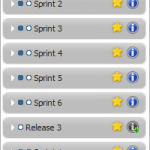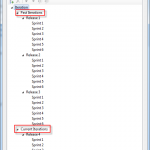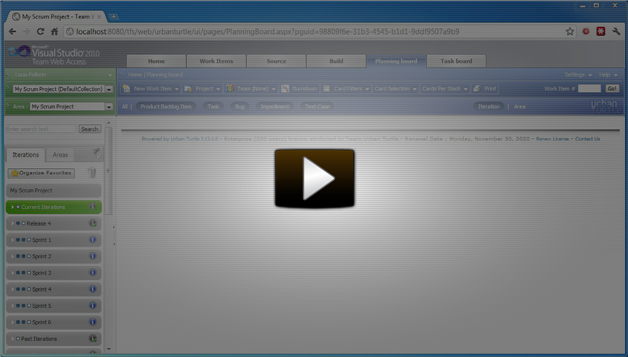Tips and Tricks: Hiding Past Iterations
So your project has been going along for a while now and several iterations are completed. Your iteration panel is starting to look a little crowded. Maybe something like this:
You start to wonder about how great it would be if you could hide those past iterations so you can focus on the current and future ones. Lucky for you, this Turtle just happens to be wearing a sweater (this is Canada after all) and its sleeves are full of tricks!
There are two possible ways to hide older iterations. The Favorites feature (the stars that you see on each iteration) is the most obvious one to use. Simply click on the star for each iteration that you wish to hide, turning the star grey. Then, click the Apply Favorites button to only show the selected iterations (the ones with the yellow stars). This also works for areas.
However, there is one caveat that you should be aware of. Hiding a large number of iterations using favorites may lead to performance issues as one of our customers has reported on the community. A proposed work-around is to use the Team functionality to hide a part of the iteration tree. You see, teams can be configured to have a distinct root iteration. By default, the project node is the root iteration. If you change the root iteration, the nodes that are not under it will not appear in Urban Turtle. So a recommended solution would be to have a structure similar as the following:
If you make the Current Iterations node the root node for your team, then you won't see the node Past Iterations or its children. This is a lot faster than hiding individual iterations using the Favorites feature. In Visual Studio, it is possible to move individual nodes. So you could move an iteration that is under Current Iterations to the Past Iterations node when it is complete and it will be hidden from Urban Turtle.
If you look at your own planning board, chances are you won't find a Team menu as shown in the preceding video. This is because you need to enable it through the global.settings file. For instance, the global.settings file used in this video looks like this:

The documentation for the Team functionality (and the global.settings file) can be found here.


